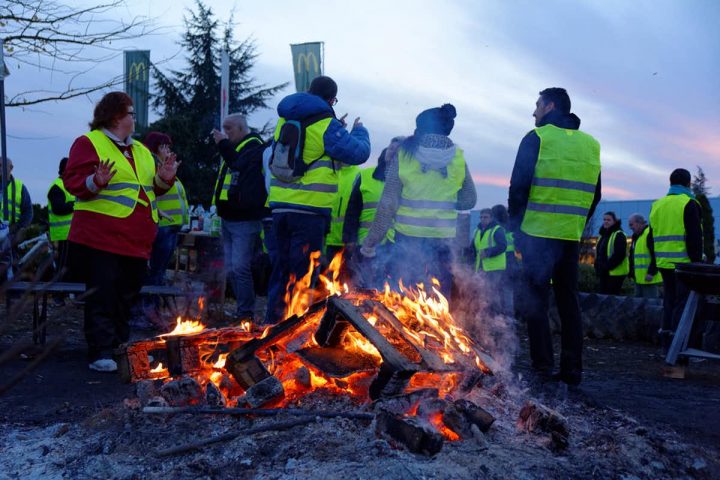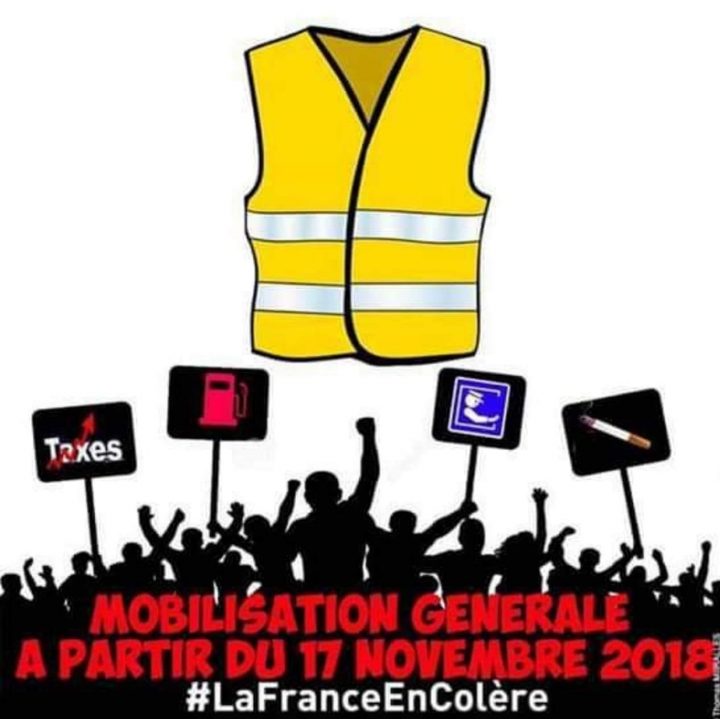Oliver Davis, University of Warwick
Over the last month, France has witnessed the sudden emergence of a militant populist movement which enjoys strong support from the wider population.
The “gilets jaunes” are named after those yellow hi-vis vests which French law requires drivers to carry in their car, along with a warning triangle and other paraphernalia, for use in the event of a breakdown. Hundreds of thousands of very ordinary French citizens have donned their vests and taken to the streets in protest.
The movement began in October, with an online petition against rising fuel prices. Since then, the gilets jaunes have occupied payment points on France’s many toll roads, put around a fifth of the nation’s roadside speed cameras out of action, bricked up entrances to regional tax offices and blocked Paris’s perilous ring road (la périphérique), among other major roads.
They have marched peacefully through numerous provincial towns and cities and fought pitched battles with riot police on Paris’s Champs-Élysées. Protests have been particularly intense in the French overseas territory of La Réunion, an island in the Indian Ocean. The gilets jaunes have accomplished all this largely through social media and without designated leaders.
Fuel prices rise, Macron’s popularity falls
For the first time in his presidency, Emmanuel Macron looks worried, and well he might. Since January 2018, his popularity has withered, falling by half to 25%, while surveys suggest around 70% of the population now support the protest movement which has adopted “Macron, resign!” as one of its slogans. Public support has steadily risen over November and in one survey a staggering 42% of respondents said they planned to actually join the movement.
Rising fuel prices ignited it. From October 2017 to October 2018, the pump price of petrol in France rose by 15% and diesel by 23%. Although two thirds of the increase in pump prices can be attributed to rising international oil prices, the remaining third is down to Macron’s government ratcheting up the green taxes on fossil fuels introduced by his predecessor. These taxes are the key policy instrument intended to ensure France meets its climate change targets. They are designed to send a “price signal” to consumers that they should reduce fuel consumption, buy more fuel efficient cars and change to alternative modes of transport.
In a recent press conference, Macron announced some slight softening of the government’s position. In response to rising oil prices in international markets, the government will periodically consider whether to suspend the introduction of planned fuel duty rises. He also announced that financial incentives to switch to cleaner vehicles would be made more attractive but reiterated his commitment to the planned tax rises as a key plank of his environmental policy.
Who are the protestors?
The problem for Macron is that the gilets jaunes may have been spurred to protest by rising fuel prices, but their anger and ambition far exceed that particular cause. This was already clear in an influential YouTube video by prominent protester, Jacline Mouraud. Addressing her remarks to Emmanuel Macron, this 51-year-old working mother not only denounced the state’s “hounding” of drivers but also asked repeatedly: “What are you doing with French people’s dosh?” She voiced the populist charge that the governing elite in Paris has lost touch with those they govern.
Demographer Hervé Le Bras has noted that the movement enjoys little support in urban areas and its activists are drawn mainly from the rural lower middle classes and working poor. It is the movement’s emphasis on the decline in the spending power of ordinary households (“le pouvoir d’achat”), that has garnered widespread public support.

computerhotline/flickr, CC BY
The movement has taken Macron’s government by surprise. Its initial reaction was to smear the gilets jaunes as a violent far-right movement. It helped that Marine Le Pen had spoken favourably of the gilets jaunes, but so had a range of politicians from across the political spectrum, including the leader of radical left party La France Insoumise, Jean-Luc Mélenchon.
The government’s smear tactics were designed to deprive the gilets jaunes of support from the trade union movement. They were initially successful in doing so, but a prominent trade union confederation (the CGT) has now called on its members to join the demonstration for social justice on December 1. This is the day already earmarked by the gilets jaunes for their next protest (“Act III”, as it has been called on social media).

Obier/Wikimedia Commons, CC BY
Parallels and prognosis
Commentators have lined up to liken the movement variously to peasant revolts of several centuries ago and a reactionary shopkeepers’ movement led by Pierre Poujade in the 1950s. Yet it is the parallel Macron himself recently evoked – a comparison to leave voters in the Brexit referendum – that is perhaps the most suggestive. Although this was not what Macron intended, the parallel intimates that he may share something of David Cameron’s patrician overconfidence in his own aptitude to rule.
As historian Gérard Noiriel has remarked, Macron’s economic reforms are leaving people stranded at the roadside, broken down, and with only their gilets jaunes to protect them. Their hi-vis waistcoats have certainly succeeded in drawing the eye to this emerging cause. I suspect that there are several more acts to follow in this particular political drama.![]()
Oliver Davis, Reader in French Studies, University of Warwick
This article is republished from The Conversation under a Creative Commons license. Read the original article.










